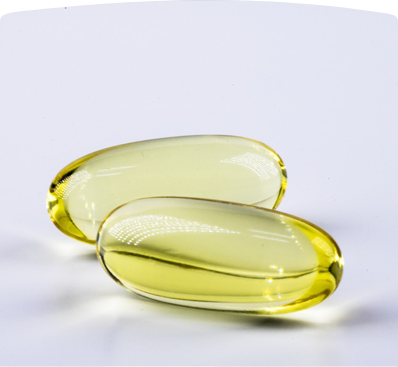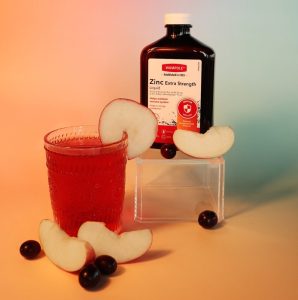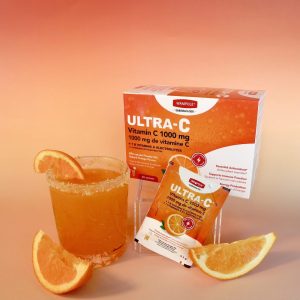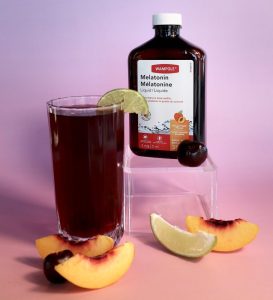By Guy Chamberland, PhD
Living with chronic pain is complex. A person struggles to find optimal analgesia through drugs while balancing relief versus tolerability to the medication. In many cases the person is also faced with issues of potential drug addiction or physical dependence to the medication. For some people this battle is difficult because of the intolerable side effects of the medication. Could the solution be in the use of natural health products (NHP)?
Many people do not believe that a NHP can help reduce pain. Fact is NHPs can be effective in the battle against pain. As with many remedies, efficacy is a question of dosage, frequency of intake, and product quality. It is not because we consume a natural ingredient known to have analgesic properties that the pain will be reduced. Reducing pain requires consuming ingredients at a dosage sufficient to act on the mechanism responsible for the sensation of pain (e.g., pain receptor) as well as how often we take the ingredient per day.
Depending on the severity of the pain, to obtain adequate relief, a person may need to consume several ingredients. This may sound surprising when we are used to hearing about ‘miracle’ cures. It is easily understandable that several ingredients may be needed if we consider how pain is treated pharmacologically with conventional drugs. Basically, several drugs may need to be taken to ‘turn off’ or reduce the intensity of the ‘signals’ in the body that are responsible for the inflammation and pain.
From a simplistic point of view, there are three key pharmacological aspects to the management of pain. These are anti-inflammatory, analgesic, and antispasmodic ingredients. The anti-inflammatory agents are used to reduce the inflammation responsible for the pain and maintain pain reduction. Analgesic agents are used to reduce the pain by blocking the mechanism responsible for the sensation of pain. Antispasmodic ingredients are used in conditions where there are muscle cramps or spasms.
The anti-inflammatory NHPs are critical and need to be taken daily to ensure adequate reduction of the inflammation and pain. Anti-inflammatory drugs have been shown in clinical trials to be quite effective for mild to moderate pain thereby emphasizing the importance of anti-inflammatory NHPs in the management of pain. When used alone, anti-inflammatory NHPs may be sufficient to adequately reduce mild pain but may be ineffective for moderate or severe pain. In some conditions, it may require taking the product daily for 2 to 3 months before benefiting from maximal pain relief.
Some NHPs are ineffective at reducing pain simply because they do not contain enough active ingredients per dose or because the frequency of use of the product is insufficient to maintain pain relief. There is a minimal effective dose for every ingredient. The amount of an active ingredient must be taken at a level above its minimal effective dose to obtain the desired benefits. The frequency of intake is very important because the active ingredients of NHPs may have a short duration of action resulting in the pain relief benefit lasting only a few hours.
Pain relief is obtained if you consume an NHP of good quality that contains sufficient active ingredients and take it at the correct dosage frequency. It is true that a quality NHP generally has a better safety and tolerability profile than a synthetic drug. But this does not mean that you will not experience any side effects. Just like efficacy, side effects are linked to the dose taken and in some cases to the frequency and/or duration of intake. Be careful when increasing the dose as this can result in an increase in the risk of having a side effect. With NHPs there is no risk of drug addiction or physical dependence.
Living with pain does not mean that there is no pain or that pain flare ups do not occur. It means that you learn how to self-treat certain aspects of the pain on a daily basis allowing you to have an acceptable quality of life. Use of anti-inflammatory and mild analgesic agents may provide adequate pain relief the majority of the time. Activities like shoveling snow or over exertion may result in a pain flare up. You have to learn when to take the rescue analgesic or additional anti-inflammatory agents to help prevent the flare up. This is part of living with chronic pain.
Some well-known anti-inflammatory natural agents are: leaves of Black currant (Ribes nigrum), resin of Boswellia (Boswellia sacra or serrate; also known as Frankincense tree), secondary roots of Devil’s claw (Harpagophytum procumbens), herb top of Common Figwort (Scrophularia nodosa), and rhizomes of Turmeric (Curcuma longa). Some ingredients, such as Devil’s claw, have been studied in over 20 clinical trials showing benefits in patients with low back pain, osteoarthritis and rheumatoid arthritis.
A few important analgesic natural agents are: dried rhizome and roots of Black cohosh (Cimicifuga racemosa), herb top of California poppy (Eschscholzia californica), flower or herb top of Meadowsweet (Filipendula ulmaria), and bark of White Willow (Salix alba). In fact, other than California poppy, these agents are both analgesic and anti-inflammatory. This is common with natural products since these contain numerous active ingredients.
In the case of California poppy, it has analgesic, anxiolytic and sedative activity. The analgesic activity of these herbal agents is dependent on the dosage taken. When used at an adequate dosage, these herbal ingredients are sufficiently strong analgesic agents to be used alone.
The rhizome of Licorice (liquorice) (Glycyrrhiza glabra), herb top of Skullcap (Scutellaria lateriflora) and the rhizomes and roots of Valerian (Valeriana officinalis) are used to make natural antispasmodic remedies.
A health care practitioner (HCP) should be consulted before trying to use NHPs on your own to reduce pain. Pain is a sign that something is wrong with the body. It is important to find the cause of the pain to ensure the treatment taken is the best for you. Consulting is very important to learn what doses and dosing frequencies are adequate and safe. It is very important that you tell the HCP what drugs and NHPs you are taking. NHPs can have interactions with drugs and other NHPs. Part of using NHPs safely is avoiding potential drug or NHP interactions. The last thing a person with chronic pain needs is taking a product and inducing side effects that worsen their quality of life. These professionals will also be able to help you select brands that are of good quality.
Guy Chamberland, M.Sc., Ph.D., and Master Herbalist, is a retired drug development specialist with 15 years experience in the pharmaceutical industry. He has completed training as a natural health practitioner, bioenergetics practitioner, chartered herbalist, in herbal prescriptions, and performed clinical research to obtain the degree of Master Herbalist. Guy has been developing herbal-based products for many years. Through his continued research in herbal science, he has become an expert in herbal pain management.








